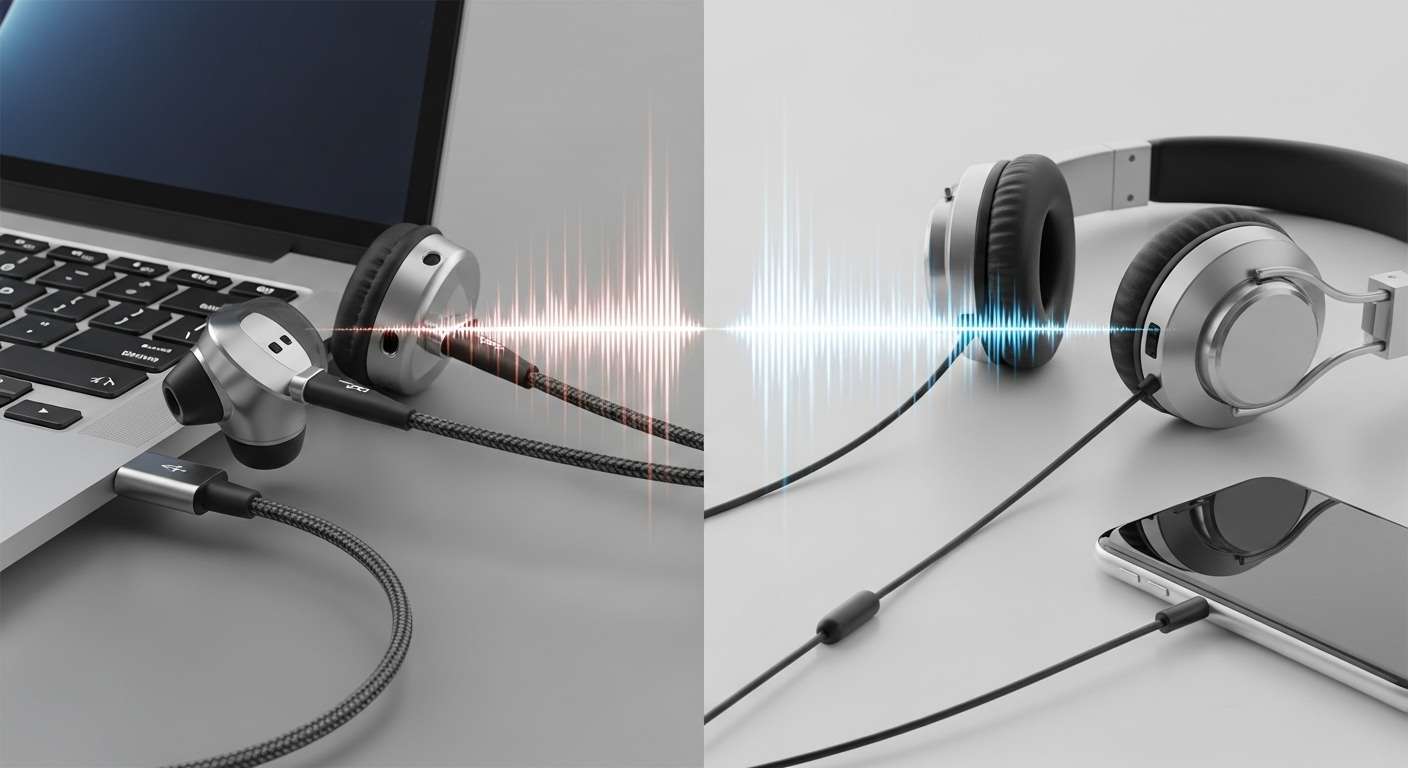Alright, buddy, here’s the deal. If you’ve been wondering whether plugging your headphones into that shiny USB-C port makes your tunes sound any better than the good old 3.5 mm jack, you’re not alone.
Heck, it’s even got tech nerds scratching their heads! So, let’s talk it out like friends over coffee and break down the whole USB-C vs. 3.5 mm headphone saga.
1. What’s the Big Difference Anyway?

Analog vs. Digital Signals
Here’s the rookie version: your classic 3.5 mm headphone jack sends analog signals. Your phone converts digital music into analog so your headphones can play it.
USB-C headphones, on the other hand, handle digital signals directly. That means the conversion from digital to analog happens inside the headphones themselves, not your phone.
Sound better? Potentially, yes. But take a breath before throwing your old headphones out the window.
2. Why USB-C Could Have an Edge
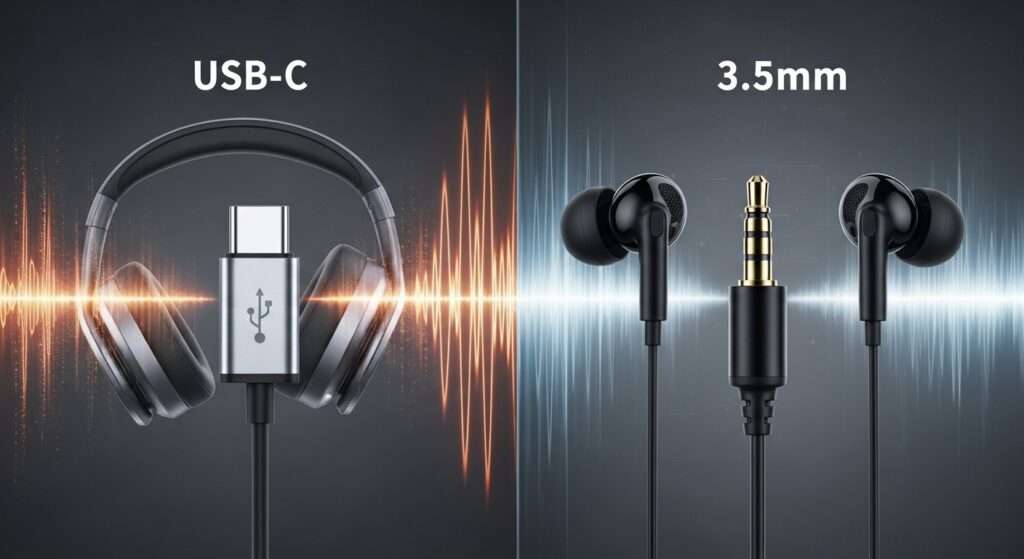
Proximity to the DAC
The DAC (Digital-to-Analog Converter) is the magic box that turns digital music into something your ears can understand.
- With 3.5 mm jacks, the DAC lives inside your phone.
- With USB-C headphones, the DAC is inside the headphones — right next to the speakers.
Why care? Because having the DAC closer reduces the chances of noise and interference picked up by long cables. Plus, headphone makers can pick fancier, better DACs and amps than what phone manufacturers cram into budget or mid-tier phones. That’s a win for sound quality, at least on paper.
Extra Features and Control
USB-C can do more than just pass audio. It can:
- Send control signals for volume, play/pause, even EQ adjustments.
- Power active noise cancellation and other smart features directly.
- Potentially connect to apps for custom sound tweaking.
That means USB-C headphones can be smarter and more flexible, not just louder or clearer.
Slimmer Phones and Charging Combo
Manufacturers love saving space inside phones. Cutting that 3.5 mm jack frees up millimeters for bigger batteries or slimmer builds. Plus, some USB-C headphones let you listen and charge simultaneously with adapters, because… multitasking is king these days.
3. But Wait — It’s Not All Roses for USB-C
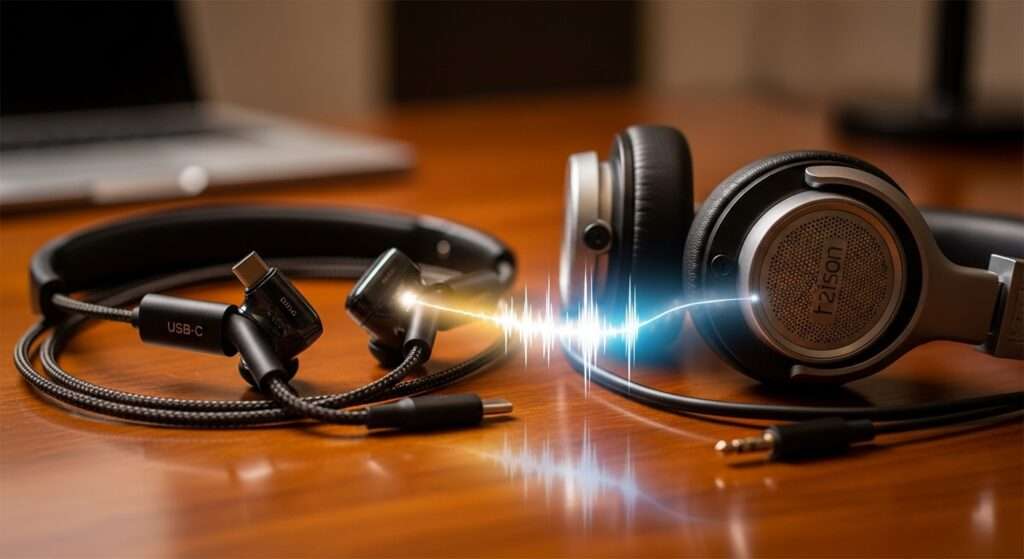
The DAC Quality Depends On The Headset
Remember how cool DAC in USB-C headphones can be? Well, it can also be… not so cool. If you buy budget USB-C headphones, chances are the DAC inside is meh. So you might get worse sound than your decent 3.5 mm headphones hooked up to a decent phone DAC.
Compatibility Nightmares
USB-C isn’t a universal audio standard like 3.5 mm. Some phones treat USB-C audio differently, and not all USB-C headphones work on all devices. Random disconnects or no sound at all? Yeah, it’s happened.
Analog Fans Still Swear By 3.5 mm
Audiophiles often say 3.5 mm is more “natural” because it’s analog and simple. No need for digital processing, apps, or software whims. It’s just pure sound. That’s why some swear by good old wired jacks, especially with high-end gear.
4. So, Do USB-C Headphones Actually Sound Better?
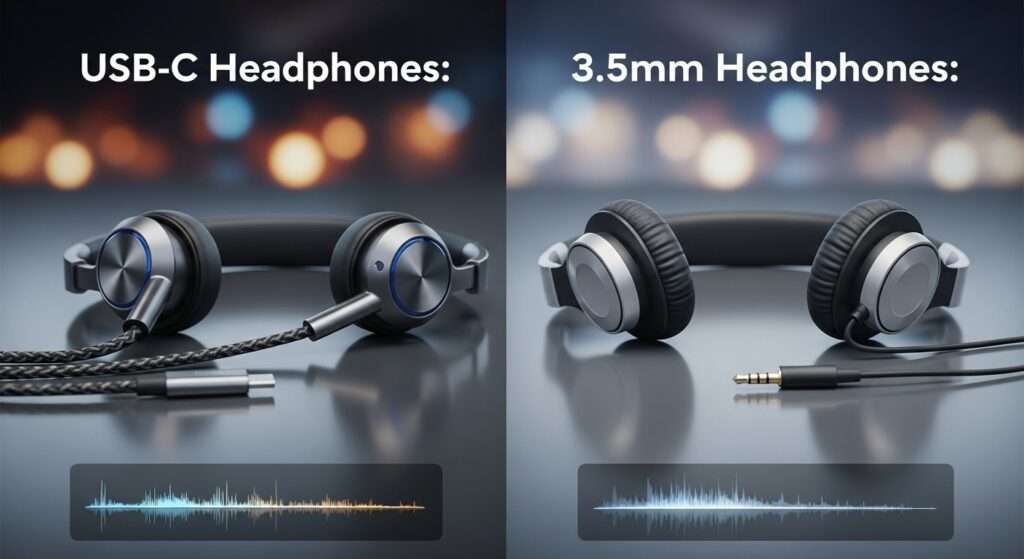
The short answer: It depends. USB-C headphones can sound better because they:
- Bypass potential noise on analog cables.
- Use dedicated DACs in the headset with room to shine.
- Support advanced features like active noise canceling powered by the port.
But… If you plug low-quality USB-C headphones into your phone, you might hear a downgrade instead of an upgrade. And remember, 3.5 mm headphones plugged into a phone with a solid DAC still hold their own sometimes better than USB-C alternatives.
My Own Take
Personally, I had a pair of USB-C headphones that sounded decent, sure, but not mind-blowing compared to my trusty, old 3.5 mm set hooked to my smartphone. What won me over with USB-C was the extra features like no battery worries for headphone noise canceling and more seamless controls. But hey, if pure sound quality is your jam, don’t toss your 3.5 mm headphones just yet.
5. Quick Comparison Table
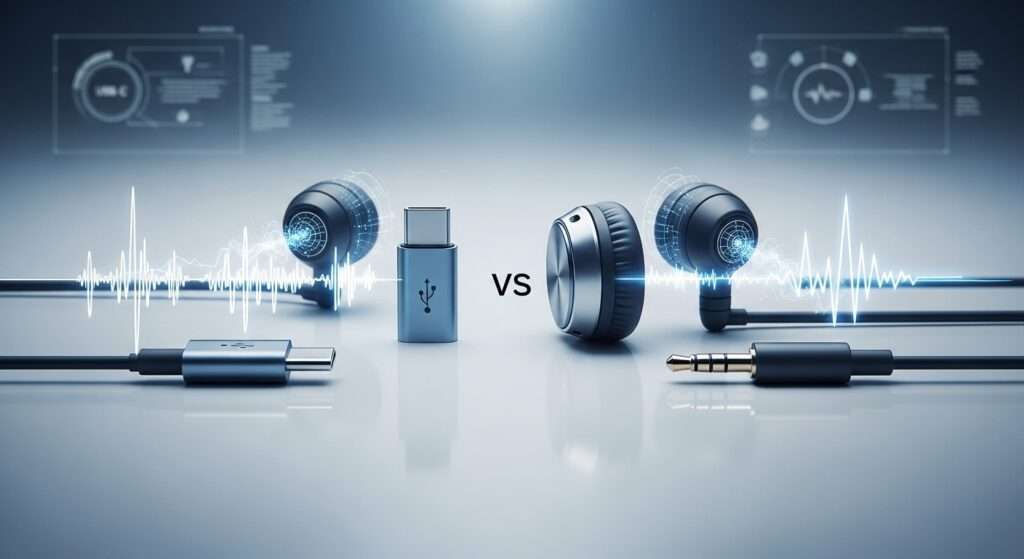
| Feature | USB-C Headphones | 3.5 mm Headphones |
|---|---|---|
| Signal Type | Digital | Analog |
| DAC Location | Inside headphones | Inside phone |
| Noise potential | Lower (less interference) | Higher (cable noise possible) |
| Device compatibility | Can be tricky | Universal |
| Extra features | Supports smart controls, ANC, apps | Usually limited |
| Portability & charging | Can listen & charge with adapters | Separate charging needed |
| Sound quality potential | Potentially better (higher-fidelity DACs) | Depends on phone DAC quality |
Should You Make the Switch?
If you’re rocking a high-end or mid-range phone without a headphone jack and want smart headphones USB-C is the future knocking at your ear canal. If you still cherish your 3.5 mm headphones or have an awesome DAC in your phone, stick with them until USB-C headphones win you over with quality AND features.
Final Thought
In a world chasing thinner phones and more magic widgets, USB-C headphones promise a lot. But sound quality isn’t automatically better just because it’s digital. It’s like microwaving a gourmet meal it’s about what’s inside that counts.
So, before you jump on the USB-C bandwagon, think about what really matters to you sound quality, convenience, or shiny new features. And remember, the proof is in the listening. Happy headphone hunting!

